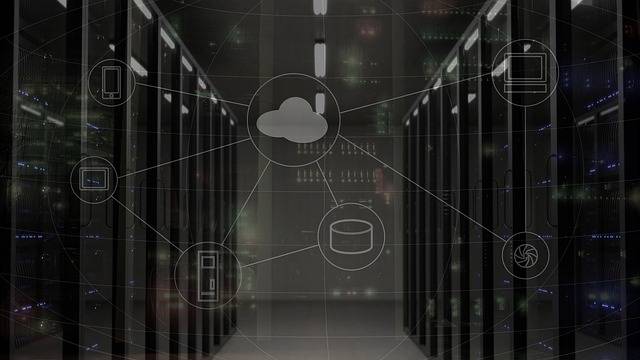
Summary
November 2024 witnessed a record surge in ransomware attacks, exceeding all previous months. Several factors contributed to this increase, including the rise of new ransomware groups and the exploitation of vulnerabilities in systems like VPNs and Microsoft Exchange Servers. This article analyzes the contributing factors, key players, and impact of this unprecedented ransomware wave.
Explore the data solution with built-in protection against ransomware TrueNAS.
** Main Story**
Okay, so November 2024? Absolutely bonkers for ransomware. We’re talking all-time high, shattered-previous-records kind of bonkers. It was, like, a whole new level of bad.
Data’s showing a huge spike, I mean way more than double the average monthly victims. Seriously, who saw that coming? It really highlights how ransomware’s evolving and how we’re all playing catch-up trying to have strong cybersecurity in place. Which is easier said than done sometimes, right?
Record-Breaking Numbers and Contributing Factors
November 2024… over 600 reported victims. That’s not just a little bump, that’s a serious spike compared to May 2024’s previous record. So, what was behind this? Well, a few things, but mostly these new, super aggressive ransomware groups.
RansomHub, for example, came out of nowhere, and just exploded onto the scene. They seemed to scale up incredibly fast, hitting multiple industries. And Akira? Don’t forget about them! They tripled their usual victim count. Tripled. Clearly, those guys weren’t messing around. And it wasn’t just them, either. Kill Security, SAFEPAY, Qilin… they all had a hand in the November mayhem. It was a real team effort… on the bad guys’ side, of course.
Vulnerabilities and Attack Vectors
If you dig into the attacks themselves, you see some common weak spots. A lot of victims were using VPN products that were flagged as high-risk. Honestly, that’s not a surprise. Attackers are always looking for that chink in the armor, right? It’s all about exploiting those software vulnerabilities and weak credentials, especially when there’s no multi-factor authentication (MFA) for VPN access. Like leaving the front door wide open, if you ask me.
Plus, old Microsoft Exchange Servers? Still causing problems. It’s mind-boggling how many unpatched systems are still out there, even years after vulnerabilities become public knowledge. I mean, it was only a small percentage using outdated Exchange Servers but still, its a huge amount of systems to choose from for ransomware actors. Which just goes to show, patching and access controls are vital. Can’t stress that enough.
Impact and Key Players
It hit everything, lots of different organisations impacted. Including some big names. Blue Yonder, for example, a supply chain management company, got hit hard. That caused problems for their clients like Morrisons, Sainsbury’s, and Starbucks. Suddenly it’s not just Blue Yonder that are impacted, but these huge household names as well. These ransomware attacks end up cascading, affecting global supply chains. Then Finastra, a financial software provider, was hit. Hot Topic, too. Wide spread, right across many sectors.
What is concerning is that there are new ransomware groups coming in to play, Interlock and Ymir, for instance, are using Veeam Backup systems. That sounds bad. Then Safepay and FunkSec were making waves, racking up victims left, right, and center within a short space of time.
Apparently, this rapid growth is thanks to leaked source code floating around on cybercriminal forums, which makes it easier to create and launch new ransomware. Pretty scary thought, isn’t it?
Conclusion: A Call for Enhanced Cybersecurity
November 2024 was a wake-up call. The bad guys are getting smarter, and we need to be smarter too. We need to prioritize our cybersecurity measures, and I mean really prioritize them. Patch those systems, lock down access controls with MFA, and get those security assessments done. On top of that, we need to work together, you know? Industries, governments, cybersecurity professionals – we’re all in this together. No one is immune.
Frankly, we need to be proactive and agile when it comes to security. Staying ahead of these threats is a never-ending battle. I mean, who knows what December 2024 held or what 2025 will bring? So, as of today, March 7, 2025, all this is still relevant. But the ransomware landscape shifts fast, so stay vigilant, folks. And for goodness sake, get those patches done!


Given the surge in ransomware attacks exploiting VPN vulnerabilities, what proactive measures beyond patching and MFA can organizations implement to detect and mitigate these threats in real-time, especially considering the evolving tactics of ransomware groups?
Great question! The evolving tactics are definitely a concern. Beyond patching and MFA, real-time threat detection using AI-powered security tools is crucial. Implementing network segmentation can also limit the blast radius of an attack. Plus, regular security audits and employee training play a vital role in staying ahead. What other proactive measures have you seen work effectively?
Editor: StorageTech.News
Thank you to our Sponsor Esdebe
November 2024, the month ransomware went wild! I bet the cyber insurance companies loved those record numbers. Anyone taking bets on which outdated tech will fuel the next surge? I am going with Windows XP!
Haha, love the Windows XP prediction! It’s definitely a potential target, given its age and known vulnerabilities. While newer systems are generally better protected, the sheer volume of legacy systems still running is concerning. Perhaps focusing on securing those vulnerable systems is a better approach than betting on the next OS in the firing line. Food for thought!
Editor: StorageTech.News
Thank you to our Sponsor Esdebe
Given the surge in attacks via leaked source code, how effective are current methods for tracking and neutralizing these code leaks before they are weaponized into ransomware variants?
That’s a great question! The proliferation of leaked source code is definitely fueling the ransomware surge. Current methods like code monitoring and dark web scans help, but aren’t always fast enough. Improving collaboration between security researchers and law enforcement is key to proactively neutralizing these leaks. Any thoughts on how to foster better information sharing?
Editor: StorageTech.News
Thank you to our Sponsor Esdebe